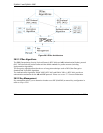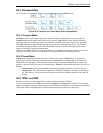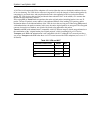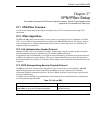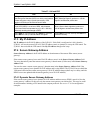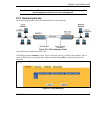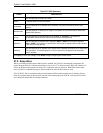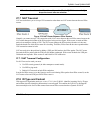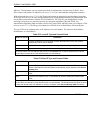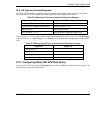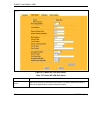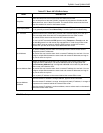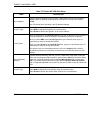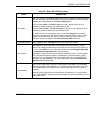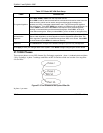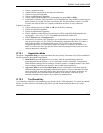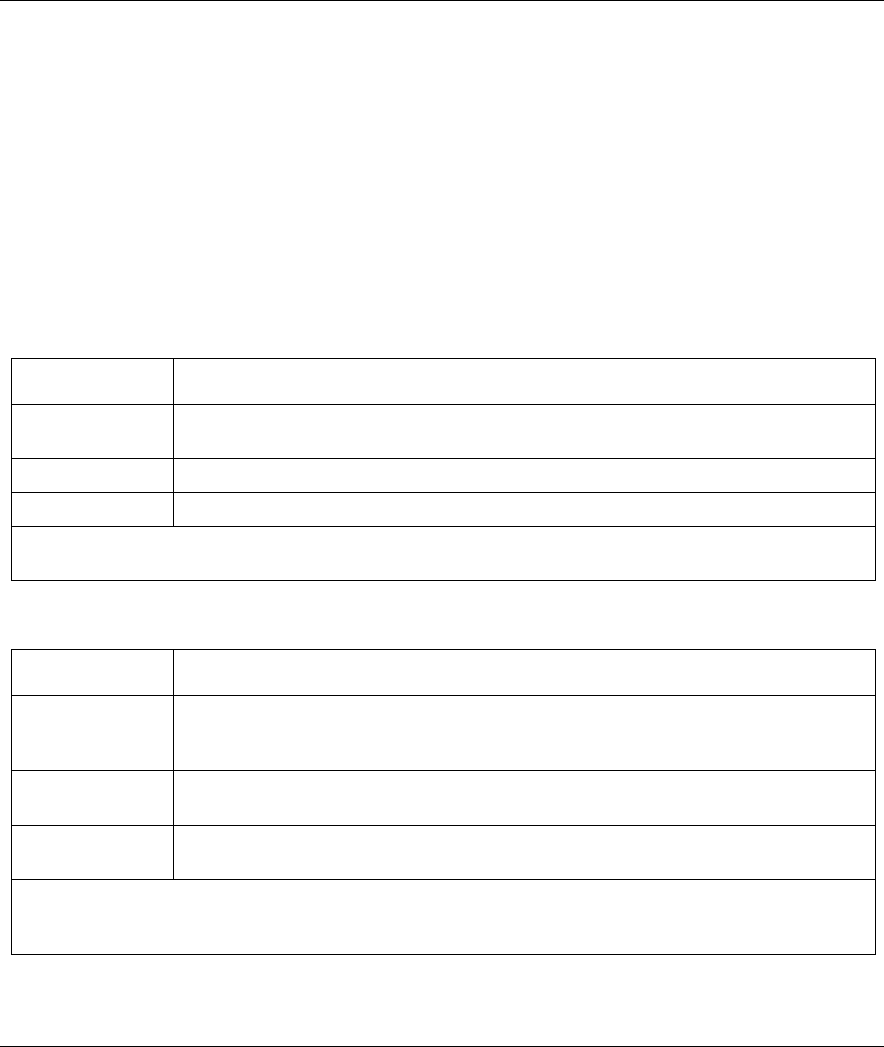
ZyWALL 2 and ZyWALL 2WE
27-6 VPN/IPSec Setup
addresses. Telecommuters can use separate passwords to simultaneously connect to the ZyWALL from
IPSec routers with dynamic IP addresses (see section 27.16.2 for a telecommuter configuration example).
With main mode (see section 27.10.1), the ID type and content are encrypted to provide identity protection.
In this case the ZyWALL can only distinguish between up to eight different incoming SAs that connect from
remote IPSec routers that have dynamic WAN IP addresses. The ZyWALL can distinguish up to eight
incoming SAs because you can select between two encryption algorithms (DES and 3DES), two
authentication algorithms (MD5 and SHA1) and two key groups (DH1 and DH2) when you configure a VPN
rule (see section 27.11). The ID type and content act as an extra level of identification for incoming SAs.
The type of ID can be a domain name, an IP address or an e-mail address. The content is the IP address,
domain name, or e-mail address.
Table 27-3 Local ID Type and Content Fields
LOCAL ID TYPE= CONTENT=
IP Type the IP address of your computer or leave the field blank to have the ZyWALL
automatically use its own IP address.
DNS Type a domain name (up to 31 characters) by which to identify this ZyWALL.
E-mail Type an e-mail address (up to 31 characters) by which to identify this ZyWALL.
The domain name or e-mail address that you use in the Content field is used for identification purposes
only and does not need to be a real domain name or e-mail address.
Table 27-4 Peer ID Type and Content Fields
PEER ID TYPE= CONTENT=
IP Type the IP address of the computer with which you will make the VPN connection or
leave the field blank to have the ZyWALL automatically use the address in the Secure
Gateway field.
DNS Type a domain name (up to 31 characters) by which to identify the remote IPSec
router.
E-mail Type an e-mail address (up to 31 characters) by which to identify the remote IPSec
router.
The domain name or e-mail address that you use in the Content field is used for identification purposes
only and does not need to be a real domain name or e-mail address. The domain name also does not have
to match the remote router’s IP address or what you configure in the Secure Gateway Addr field below.



